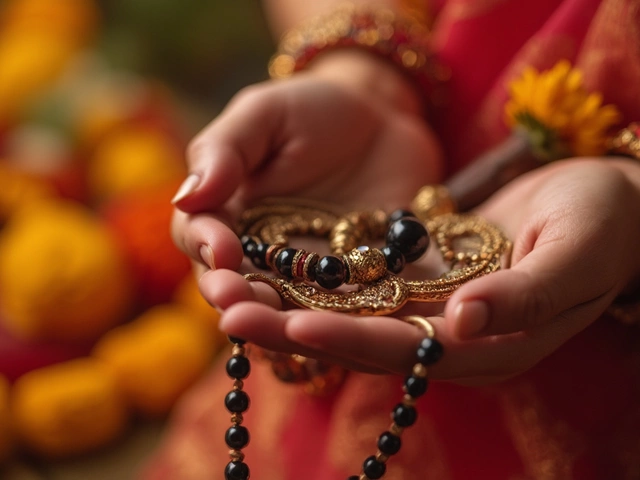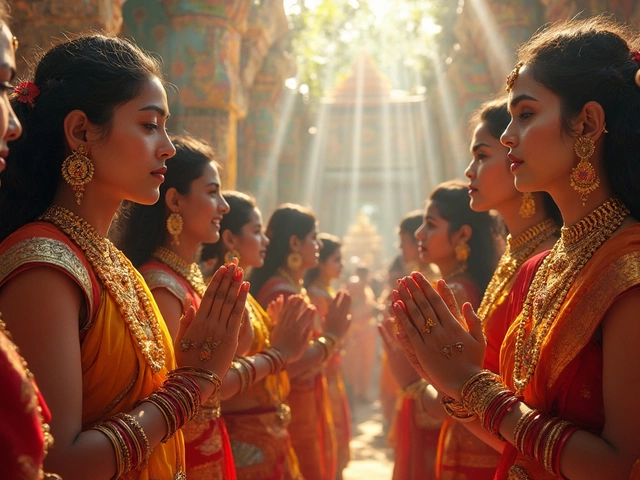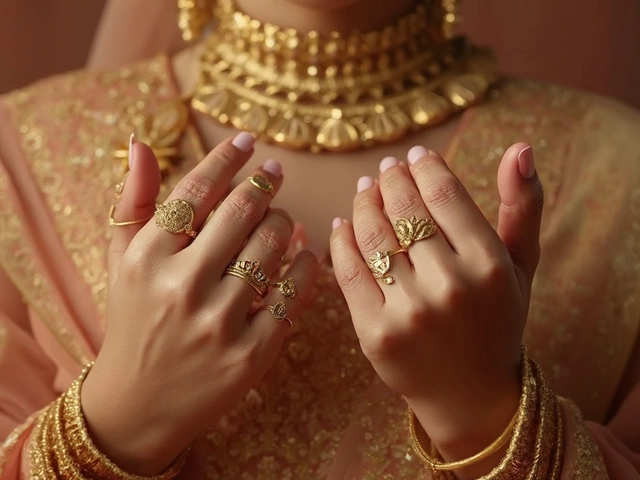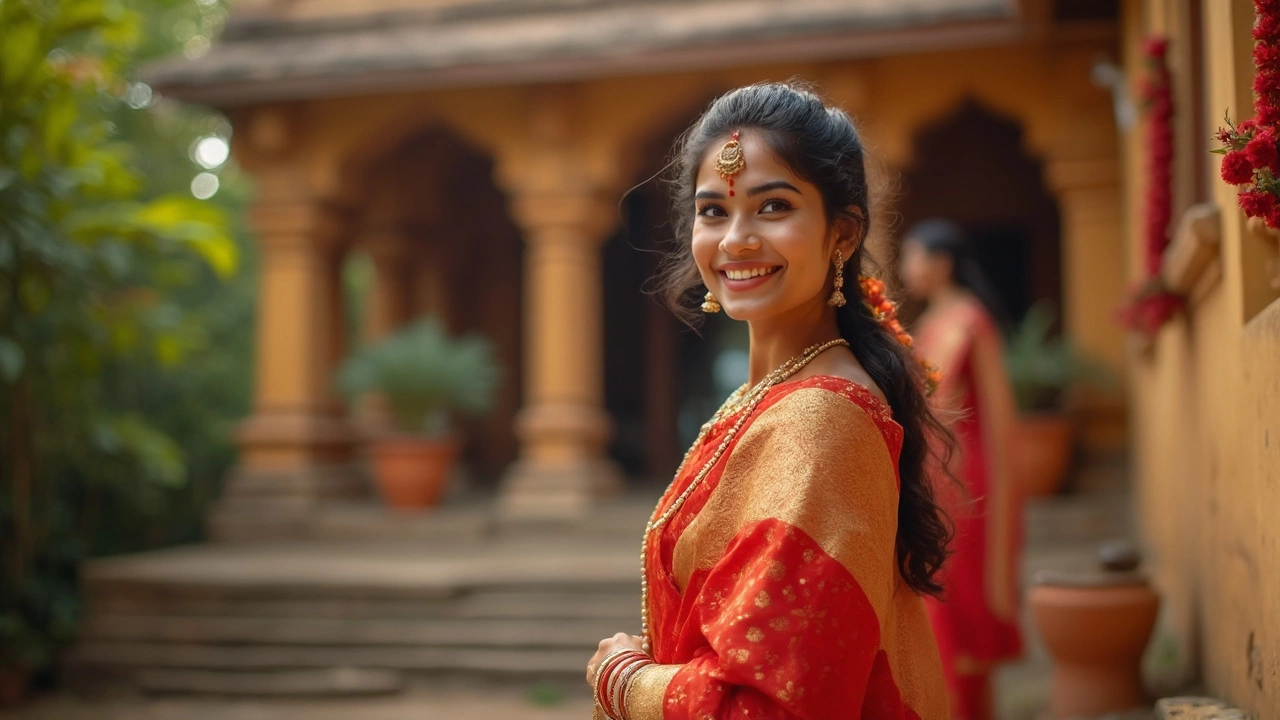
The red dot—sometimes small, sometimes big and sparkly—catches your eye right away on the forehead of many Indian girls and women. It's called a bindi, and it’s way more than just another piece of jewelry. Most people outside India see it and wonder if it’s only fashion, but the story behind it goes deep.
First off, the bindi sits smack-dab in the center of the forehead, between the eyebrows. This spot lines up with what's considered the "third eye," which in Indian culture is all about wisdom and seeing things beyond the obvious. Believe it or not, this tiny red dot connects a girl to her roots, her family's stories, and even ideas about good luck and spiritual protection.
But there's more. That red color? It isn’t random. Red in Indian tradition means energy, honor, love, and strength—think of it as a power color. Especially for married women, the bindi signals new beginnings and commitment, kind of like a wedding ring in Western cultures. For girls and unmarried women, the color and style can change up and match moods or outfits—there’s a fun side to it, too.
- What Exactly is the Red Dot?
- Roots in History and Culture
- Symbolism in Everyday Life
- Ties to Bangles and Other Traditions
- Practical Tips for Wearing a Bindi
What Exactly is the Red Dot?
The red dot you see on many Indian girls’ and women’s foreheads is called a bindi. It's basically a little mark or sticker worn at the center of the forehead, right above the nose. In most cases, you’ll spot it in red, but it actually comes in all sorts of colors, shapes, and even blingy designs these days. Kids sometimes wear cartoon ones just for fun, while adults might match them with their clothes.
Traditionally, bindis were made using red powder called kumkum, which is a mix of turmeric and slaked lime. People sometimes use sandalwood paste or even vermilion (that bright red powder you might see in Indian wedding photos). The high-traffic version these days? Ready-made sticker bindis you can just peel and stick. Super practical, especially for busy mornings or quick outfit changes.
Beyond fashion, the bindi has a few unique features:
- It marks the “ajna chakra” spot, believed to be the seat of concealed wisdom according to Indian spiritual systems.
- Wearing it may help increase concentration, which is why even little girls are often spotted with one during studies or prayers.
- It’s mainly worn by women, but you’ll also see men wear a similar mark for religious events or rituals.
Here's a quick look at common bindi materials and styles:
| Type | Material | Popular Users |
|---|---|---|
| Traditional Powder | Kumkum or vermilion | Married women, elders |
| Sticker Bindi | Velvet, felt, plastic, gems | All ages |
| Sandalwood Paste | Sandalwood, herbs | Religious figures, for ceremonies |
So, what’s the red dot really for? It’s about tradition, identity, and sometimes convenience. People pick colors and shapes to match their mood, clothes, or events. There’s nothing mysterious about putting one on—it’s simple, but packed with meaning if you know where to look.
Roots in History and Culture
The bindi isn’t some recent trend—it goes way back in Indian history. Archaeologists have found statues from the Indus Valley Civilization, over 4,000 years old, where people had marks on their foreheads. That shows the red dot has been a thing for a crazy long time, even before written language popped up in India.
In ancient Sanskrit texts, there’s a word "bindu," which literally means "point" or "dot." This point, sitting between your eyebrows, is a big deal in Indian philosophy. Hindu beliefs call this spot the sixth chakra, or “ajna.” It’s said to be a center of wisdom and focus. The idea is that when you put a red dot here, you tap into calm and concentration—pretty handy for meditation.
Wearing a bindi also had a social role. Back in the day, the style and color could even show what region or community a girl came from. You could spot someone’s background just by the way their bindi looked. It wasn’t just about looks—it gave clues about family traditions, caste, and sometimes even marital status.
| Historical Era | Bindi Significance |
|---|---|
| Indus Valley Civilization (c. 2500 BCE) | Mark on the forehead seen in figurines |
| Vedic Period (c. 1500–500 BCE) | Mentioned in texts as "bindu" with spiritual meaning |
| Classical Era (c. 500 BCE–500 CE) | Linked to status, region, and identity |
| Modern India | Symbol of culture, personal style, and ritual |
For a while, only married Hindu women wore the red bindi, but over time, the tradition opened up. Now, girls and women of all ages and backgrounds wear bindis, and not just for religious reasons. But the deep tie to culture and history has never really faded.
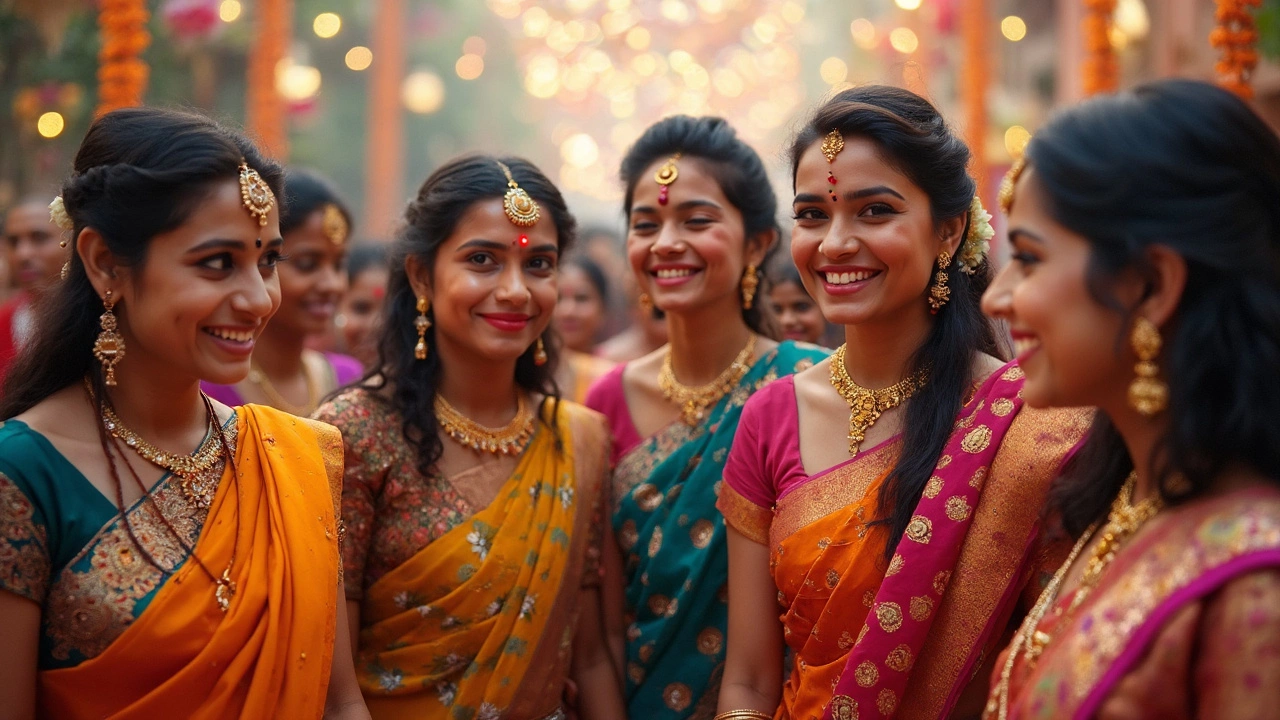
Symbolism in Everyday Life
The red dot—or bindi—shows up everywhere in daily life across India. It's not only for big festivals or weddings; you’ll spot it at schools, shops, bus stops, and family dinners. While folks from different backgrounds might wear it a bit differently, the bindi always says something about the person’s background or mood.
For married women, a red bindi is almost like a sign of status. Wearing it tells others she’s married, supported by family, and stepping into new responsibilities at home. Unmarried girls and kids can join the fun by picking playful colors or sparkly stickers. Today, you see young women mix up their look—sometimes with basic red, other days with fashion bindis in blue, green, or even little rhinestones when they’re feeling fancy.
The bindi isn’t just about looks. In some workplaces and schools, a teacher or elder might pop a red dot on a kid’s forehead for good luck, especially before an important test or sports event. It’s like a quick way of showing care and giving positive vibes. That’s why you’ll notice bindis at the start of festivals, housewarming parties, or even before someone goes on a trip.
- Sign of married life: Red bindi tells folks she's married.
- Fashion: Girls and women use different colors to match their outfits.
- Protection: Some families believe a bindi defends you from the evil eye—negative energy from jealous looks.
- Blessing: Red dot as a way to wish good luck for kids and students.
Check out these quick stats on bindi usage from a 2023 lifestyle survey across major Indian cities:
| Group | Wear a bindi daily (%) |
|---|---|
| Married women | 74 |
| Unmarried women (18-30) | 41 |
| Kids (under 14) | 17 |
These numbers just show how the bindi, while rooted in tradition, is still super relevant in everyday life. It wouldn’t be a stretch to say the bindi is as much about feeling connected as it is about style or beliefs.
Ties to Bangles and Other Traditions
If you’ve ever noticed, the red bindi isn’t the only thing Indian girls wear to show who they are and where they come from. Bangles, for example, almost always make an appearance with the bindi, especially at family gatherings, weddings, or festivals. These traditions are often woven together, so missing one can feel incomplete to those who grew up with them.
The most common pairing is: a bindi on the forehead and rows of clinking glass bangles on the wrists. Both are considered symbols of energy and new beginnings, particularly for newlyweds. The bindi says a lot about identity, and bangles double down as a sign of marital happiness, safety, and style. It’s not just about personal belief; sometimes, it’s family and social expectations, too.
Different states across India have their take on how to wear bangles. For instance, in Punjab, red and white bangles called ‘chooda’ are worn by brides for up to a year after their wedding. In Bengal, married women sport iron ‘lohas’ and red shell ‘shakha’ bangles. Sometimes, a bindi’s color will match the color of the bangles for a coordinated look—people notice these details.
| Tradition | Item | Symbolism |
|---|---|---|
| North India | Chooda (Red & white bangles) | New beginnings, married life |
| West Bengal | Shakha (Conch) & Loha (Iron) Bangles | Protection and prosperity for married women |
| All India | Bindi | Identity, wisdom, marital status |
Other traditions sometimes connect with the bindi too. Sindoor (red powder in the hair part), mangalsutra (a necklace), and toe rings are all used by married women to mark their status. Each complements the bindi in telling a personal and social story.
One practical tip: if you’re ever choosing bangles or a bindi as a guest at an Indian wedding or festival, stick to colors that match or subtly blend with your outfit, but avoid the exact styles used by brides to keep things respectful. You don’t want to accidentally send the wrong message. Feeling the clink of real glass bangles and setting your bindi in the right spot? That’s about as close as you’ll get to living the tradition, even if just for a day.

Practical Tips for Wearing a Bindi
If you've ever wanted to try wearing a bindi or just wondered how Indian girls pick the right one, there are a few tips that make it easy and fun. Anyone can wear a bindi, but knowing the basics helps you feel more comfortable and respectful of the tradition.
- Pick the Right Shape and Size: Traditionally, the red bindi is round and sits right between the eyebrows, but nowadays, there are tons of styles—stars, longer designs, or tiny dots. For beginners, a simple round or teardrop adhesive bindi is the way to go.
- Stick With the Right Color: Red is the classic color and holds meaning (it shows energy and love), but you’ll spot bindis in everything from black to gold to rainbow shades. For daily wear, many girls match their bindi to their outfit. If you’re joining a wedding or festival, red or maroon is the go-to.
- Skin-Friendly Is Best: Bindi stickers are easy to use, and most drugstores in India stock them. If you have sensitive skin, look for hypoallergenic brands—they’re pretty common. Avoid sticking anything on broken or irritated skin.
- Know When to Go Fancy: For special occasions, women often wear bigger, jeweled bindis and pair them with bangles and sarees. It’s a whole vibe, not just an accessory.
- Placement Matters: Make sure the bindi sits dead center between your eyebrows. If it’s crooked, it looks off. Most people use a mirror, but some just feel it out and get it right after a few tries.
- Respect the Culture: If you're not Indian but want to wear a bindi, do it with respect—especially at festivals, weddings, or while traveling in India. Ask friends for tips or double-check the setting so you avoid awkward moments.
Don’t be surprised if you learn bindi brands matter to folks in India—brands like Shringar, Tips & Toes, and Blue Heaven are super popular, selling millions each year. And if you’re a stats fan, here’s a quick look:
| Bindi Fact | Detail |
|---|---|
| Materials | Velvet, felt, plastic, crystals, herbal paste |
| Most Popular Color | Red |
| Price Range (India) | ₹10 – ₹500 per pack (roughly $0.12 – $6 USD) |
| Market Size (2024) | Over $200 million in India |
So, next time you spot someone wearing a bindi, there’s a good chance it’s not just for looks. It means something, feels special, and with these tips, you can wear one with confidence whether it’s for tradition or just to try out a new style.
